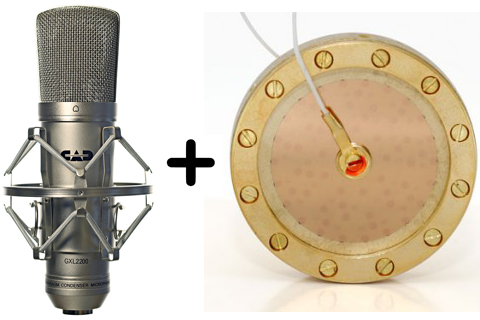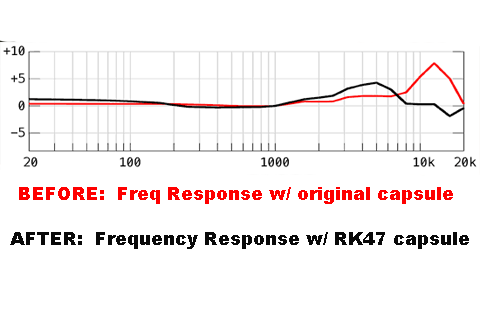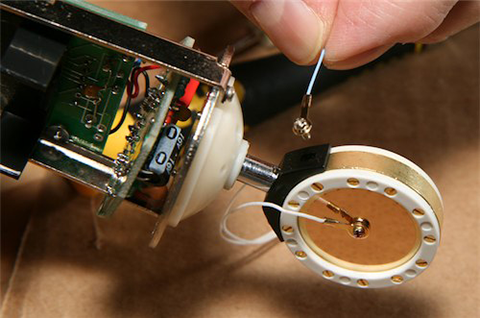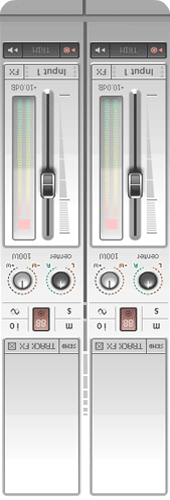The DIY U47 Clone

Microphones are one of the only technologies where antiques are considered to be technically superior than anything released today. The old saying "They sure don't make em like they used to!" certainly applies to microphones. For decades, the Neumann U47 has been the holy grail for audio engineers worldwide, who prefer its clarity, warmth and proximity effect. This is largely due to the high quality components, which define the sonic signature.
Over the last decade, the pro audio industry has been flooded with cheap chinese mics, each touting some vintage tone modeled after a classic mic. The truth is that most of these chinese mics tend to sound harsh and nothing like the classics. The "best-all-around mic for XYZ budget" is still a common thread on forums and has been echoed throughout the years. Few can afford a well maintained Neumann U47 for $10,000 and while there are some great emulations, they tend to still be expensive. One can spend years wading through the recording forums in search of a true DIY U47 Clone or an affordable alternative.
I recently stumbled upon Recording Hacks, a website entirely devoted to mic reviews and DIY hacks. The editor, Matthew McGlynn, found a way to recreate the original U47 capsule (the K47) and sells a DIY kit allowing you to basically build your own DIY U47 Clone for under $200 by removing the capsule from a cheap chinese mic and replacing with his RK47 capsule. While this is a bold claim, after looking at the frequency response comparisons and hearing the "before and after" samples, I was sold. Both lines below show the frequency response of the MXL2006, which is a $99 mic. The black line though, is strikingly close to that of a Neumann U47 FET.

As you can see above, the lows are fuller below 150Hz and there is broad presence peak in the musically useful range between 1kHz and 8kHz. The sharp, high-frequency peak at 14kHz is gone, resulting in a entirely different mic with warmer, more articulate mids. The piercing, overly-bright highs of the original are gone, forever. Forget "fix it in the mix"...The real goal of any recording session is to "nail it before it ever hits tape".
This whole thing still seemed too good to be true. I decided to email Recording Hacks and voice my skepticism about this. It wasn't long before I heard back from Matt, who had this to say:

"In most large-diaphragm condenser mics, 98% of the tone comes from the capsule. The circuit determines (to a large degree) the noise and distortion characteristics. But not the tone. The circuit might impose some EQ on the capsule, but that's generally not true of transformerless designs, as most of them were derived from the Schoeps design, which was linear.
Do you have the ability to solder some parts together on your own? If so, there is a DIY approach that will give you inexpensive access to the K47 sound as well as alternatives. The DIY approach leverages the work of my own company, so please understand that this is not an impartial recommendation. On the other hand, I wouldn't have put together the company if six years' worth of work on RecordingHacks hadn't revealed the need for it.
You can check out the sound of the RK47 capsule by soldering one into just about any inexpensive MXL, Apex, CAD, or Nady microphone, including the ones that show up on Ebay for $40. Here's the capsule you'd want: It has brass clamping rings, like the original Neumann K47 and ships with my proprietary saddle to make mounting easy and secure. If you can solder 3 wires, you can install the capsule yourself. Buy a new GXL2200 for $60 and install the RK-47 for $119 more, and you'll have a great microphone
The U87, U67, and many transformer-coupled Chinese mics (ADK A51/S51, MXL 2001, Joe Meek JM47, and their many derivatives) incorporated circuit tricks to create high-frequency rolloff for the capsule. Some of these mics have a high-pass filter built in, too. But most of the tone still comes from the capsule.
This is a roundabout way of saying that, number one, you should hear what a K47 sounds like because you might love it. By far the most affordable way to do that is to install an RK-47 into an inexpensive donor mic like the GXL2200. Number two, you should be open to checking out other sounds, and because most of the tone of the mic comes from the capsule, this means trying out other capsules. My next recommendation after the RK-47 would be the RK-12, which has flatter upper mids and a mild boost on top.
The GXL2200 is a nice donor mic because its circuit is easily modified to raise sensitivity, lower self-noise, and improve the quality of the sound. I have a "mod kit" for that mic that includes everything you need to transform the circuit into a high-performance one. Other options include the AKG Perception 220 and a handful of sub-$200 condensers, which we've reviewed Here"

Well, there you have it... Matt obviously knows more about microphones than most! I went ahead and bought the GXL2200 for $69 as well as the RK47 capsule for $119 and followed the instructions for the hack. Luckily, I had a soldering gun - these are super cheap and easy to find. My personal test for this mic was on acoustic guitar and female vocals and it sounded absolutely phenomenal, just going direct to the Apogee One. The original harshness is replaced with what could be best described as "silky smoove goodness" and yes, that just became a technical term.
I should add that mic capsules are ultra sensitive to moisture and dust. I found the MXL-WS-001 foam windscreen on Amazon, which fits perfectly on the GXL 2200. Many of the cheap chinese mics recommended on RH do not include a foam windscreen.
The bottom line is that this is a solid DIY strategy that wont break the bank. Now anyone can build their own DIY U47 Clone and compete with the classic mics. On top of that, you'll feel proud to have actually taken apart gear, modified components and improved the sound. It's the obvious choice for recording guitar and vocals on a shoestring budget. Recording Hacks offer several other mic hacks too, from the U87 to the AKG C12. Diehards can go even further by buying one of the company's circuit mod kits, which will increase sensitivity, lower self-noise, reduce distortion, and generally upgrade the sound.
I am genuinely stoked about trying ALL of these mods n' hacks. I've been looking for something like this for the past 20 years. Find one that suits you and give it a whirl..... Enjoy!







